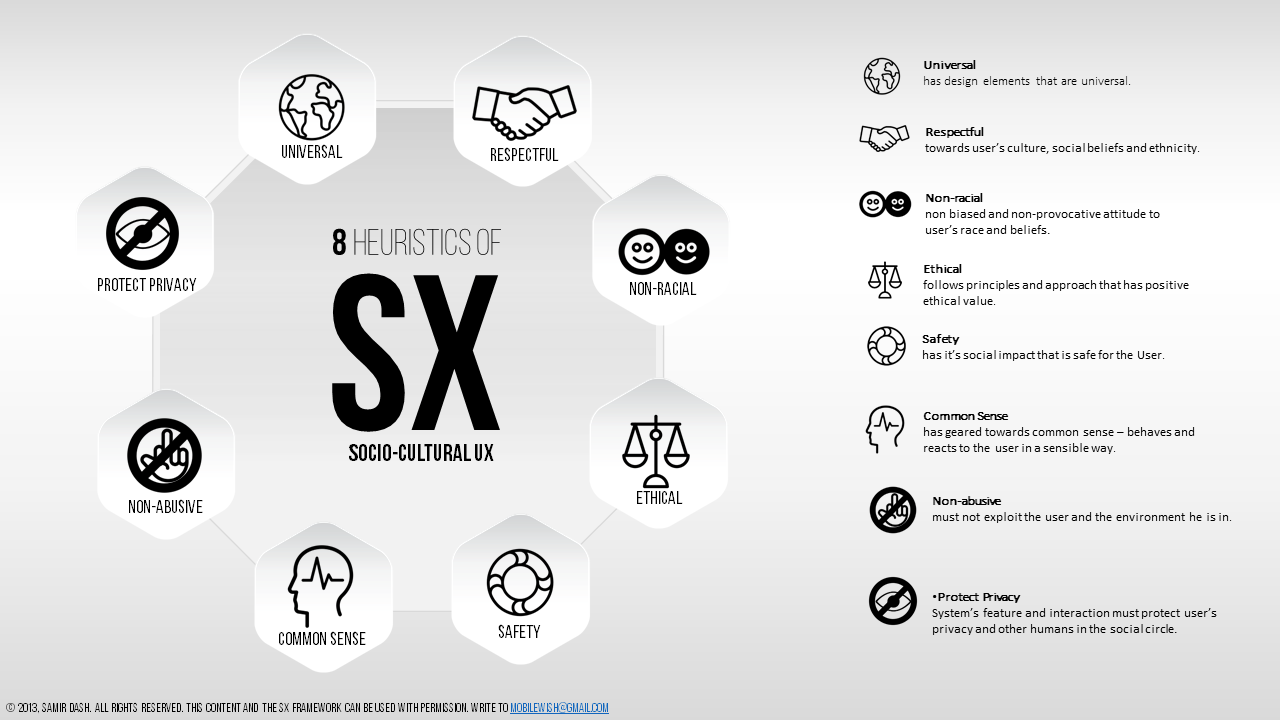
Social Ethics in Information Architecture
March 21, 2019Information Architecture (IA) is the organization, structure, and labelling of website content.
IA is comprised of the website’s informational content, context, and how users interact with the site and its content. IA is directly impacted by the socio-cultural context, ethical considerations, and implicit bias its creators: Information Architects, User Experience (UX) designers, web developers, and more. Designers and content creators who are integrating ethical UX principles into their design must consider the exact words used to create categories, taxonomy, metadata, and labels.
“So in user experience, specifically to communication context typically when we speak about ontological factors, we mostly mean language implies certain meaning to us, but may be confusing to others. One word can have a variety of meaning which may be simply opposite to what the user might need to communicate.”
Samir Dash
In order to create effective and universally usable websites, information architects must consider the words they use throughout the site, how they and their colleagues perceive them, as well as how users perceive these words. Specific word choices can have a positive or negative influence on how users interact with a website. The Internet is innately universal; user accessibility is only hindered and impacted by other users and creators. If an information architect intentionally uses obscure/cute/kitschy/jargony words for menu labels, categories, or internal taxonomy/organization throughout the website, the end result is directly in contradictory to a fundamental characteristic of its environment.
Context is Key
I am a white woman living in Seattle, Washington. When I do a search in Google for “information architecture” my results are in English and primarily created from a white/Western cultural context. In addition, the first Google search results in several articles regurgitating the same information, culled from a seminal book on the topic written by Louis Rosenfeld and Peter Morville that has gone through several editions. (There was even a period of time around 2006 when Information Architecture was seen as being no longer necessary.) These types of results will be true for most web designers working in the United States and other locations where English is the primary base for coding languages and/or website taxonomy. IA and UX design are constantly evolving. Architects and designers are making discoveries and increasing their awareness of users (read: humans) use websites, apps, and devices. It is essential for Information Architects (as well as those who work directly with them and/or implement their strategies) to consider the socio-cultural contexts in which they’re creating work, maintain strong ethics, and eliminate implicit bias that will directly impact users.
In my research, I discovered two articles written by Samir Dash that showcase his extensive thought on the socio-cultural implications of the structure and access in IA and UX design that have been overlooked–or not yet developed, depending on which way you look at it.

Dash provides the definition of a new term he coined: socio-cultural user experience design (SX). SX is “the missing piece or the component for the existing tool that helps in bringing in the quantifiable model that tries to bridge the current gap.” It serves as a “framework… to see the social influence on the user.” An information architect can not only see how a user interacts with a website/app/device but also the social influence. Understanding user experience within a socio-cultural context will improve design in the long run.
“Traditional UX model is centered around human user. But the critical factor that makes human being differentiated from other beings is his ability to ‘evolve and follow social standards.’ The history of human growth is actually more clearly represented in the ‘history of human civilization.’ So any product design must adhere to the social factor of design and this is what SX is all about.” — Samir Dash
When Google Glass was created, Samir Dash wrote about the importance of considering SX design for devices like smart glasses. He said that one of the points to focus on when creating an SxD compatible system was to ”provide multiple alternatives to the interaction methods to control the same functionalities in different socio-cultural context.“ I consider this to be an applicable point to any design for website IA and ethical UX design in addition to devices. He also outlines the eight principles that are essential to SX Design:
- Universal — has design elements that are universal
- Ethical — follows principles and approach that has positive ethical value
- Non-racial — non biased and non-provocative attitude to user’s race and beliefs
- Respectful— towards user’s culture, social beliefs and ethnicity
- Safety — has its social impact that is safe for the User
- Non-abusive — must not exploit the user and the environment he is in
- Common Sense — is geared towards common sense, behaves and reacts to the user in a sensible way
- Protect Privacy — app’s feature and interaction must protect user’s privacy and other humans in the social circles
Intersectional Heuristics
Compared with the heuristic principles outlined by Soleine Tholance in her Medium article “Information Architecture, making sense of information since 1976” it’s obvious that the best step forward is to combine all of these thoughts and practices when constructing the information architecture for any website, app, or device.
- Findable — Users can easily locate what they are looking for. i.e there is more than one way to access things.
- Accessible — The platform can be used via all channels and by visually/hearing impaired people.
- Perceptible — The information is clear and the language considers the target demographic’s reading level.
- Communicative — Labeling is consistent across the platform and allows the user to orient himself.
- Useful — Users can accomplish the task.
- Credible — To be trustworthy, information must be up to date. An easy access to customer service (real people) reinforces credibility.
- Controllable — Users can tailor the information to his needs, exit, go back, avoid errors, recover from errors
- Valuable — The information provided is desirable, creates value, improves user satisfaction.
- Learnable — The information and its architecture can be grasped quickly.
- Delightful — It exceeds the user expectations, beats the competitors.
Any Information Architect, UX designer, content creator, or even project manager can easily apply Dash’s socio-cultural UX design elements to the universally accepted principles of IA and UX design to result in a deeper, more relatable and ethical design.
Users are people too
Additionally, every designer should consider the implicit bias with which they approach any design. Users are not just bits and numbers, they are people like you and me, and as designers, our choices have a direct impact on how users can or cannot use what we create. In order to uphold the innate universality of the Internet, it’s necessary to check all potential biases, best done within a group or through extensive testing.
”Designers need to consider the effects of culture on various processes such as judgment and decision making, perceptions, emotions, and beliefs.“
Suheyda Ogan
The Internet is an incredible tool and resource. We are all eligible to utilize this resource, and web designers can actually bridge the gap between users and ideas to increase usage and continue to progress us in the future of technology. By remaining open about processes, choices, and data usage for websites, apps, and devices, and utilizing socio-cultural design as the framework for IA, any and all design choices that directly impact the users can be made ethically and responsibly.
Tags: content, design, ethics, ia, implicit bias, information architect, information architects, information architecture, Samir Dash, user experience, users, ux, ux design, web, websitesCategorized in: Web Design


